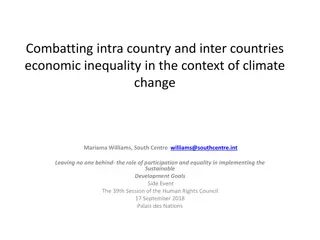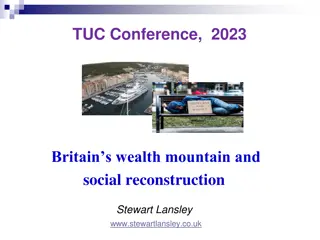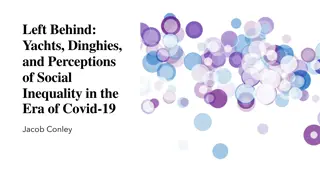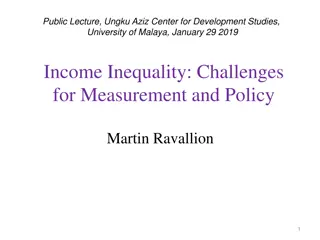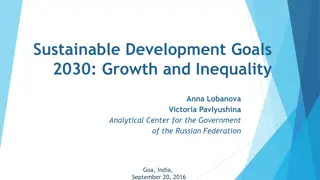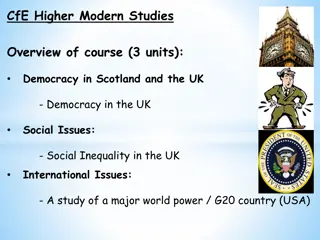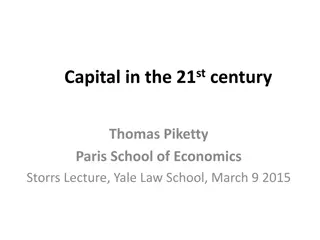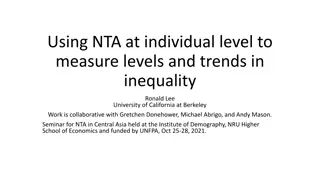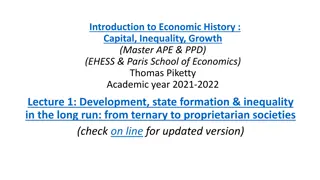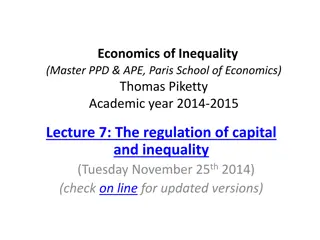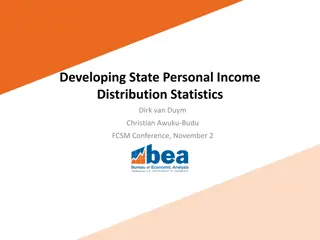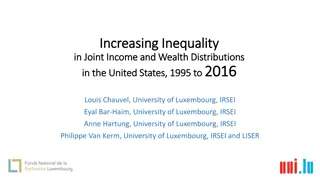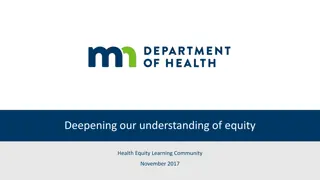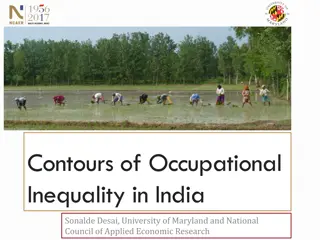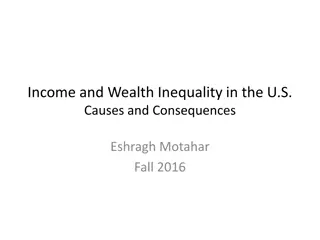Causes and Consequences of Deepening Inequality
Inequality comes in various forms - from health disparities to material resources. Global data reveals how inequality has widened over time, driven by factors like market expansion and financial capitalism autonomy. This deepening divide poses challenges that require proactive measures to address for a more equitable society.
Download Presentation

Please find below an Image/Link to download the presentation.
The content on the website is provided AS IS for your information and personal use only. It may not be sold, licensed, or shared on other websites without obtaining consent from the author.If you encounter any issues during the download, it is possible that the publisher has removed the file from their server.
You are allowed to download the files provided on this website for personal or commercial use, subject to the condition that they are used lawfully. All files are the property of their respective owners.
The content on the website is provided AS IS for your information and personal use only. It may not be sold, licensed, or shared on other websites without obtaining consent from the author.
E N D
Presentation Transcript
Inequality: its causes, consequences and how to reduce it Edward Webster Southern Centre of Inequality Studies University of Witwatersrand
Inequality of what? There are at least three quite different kinds of inequality, (Goran Therborn,2006) The first is inequality of health and death, what might be called vital inequality The second is existential inequality, which hits the individual as a person. This form of inequality means denial of (equal) recognition and respect, and is a potent generator of humiliations - for women in patriarchal societies, for indigenous groups in the Americas, for poor immigrants, for those of low caste, and for black people or stigmatised ethnic groups.. The third is material or resource inequality, which means that human actors have very different resources to draw upon. There are two aspects here. The first is access to education, to social contacts, to what is called "social capital" (in conventional discussions, this is often referred to as "inequality of opportunity"). The second is inequality of rewards (often referred to as "inequality of outcome". The latter is the most frequently used measure of inequality income and wealth
South Africa in perspective Sources: World Bank 2018
Increasing inequality globally In the first half of the 1970s, the distance in life-expectancy at birth between sub-Saharan Africa and high-income countries was twenty- five and a half years; by the early 2000s it was thirty years GDP per capita in sub-Saharan Africa, measured in terms of domestic purchasing-power, was in 1973 about 8% of the United States ; by 2005, this had dropped to 5%. Within the US, the richest 1% appropriated an 8% share of total household income in 1980; by 2000, this had grown to 17%. In Britain, the richest 1% received 6% of all income in 1980; by 2000, the figure was about 12.5% The citizenship premium you get from being born in a richer country is in essence a rent a citizenship rent (Branko Milanovic,2016)
Causes of deepening inequality The first is the extension of markets accompanying globalisation and neoliberalism , which has increased both the pool of rewards and the competition for star talent. Accelerated by the lifting of controls on capital movements in the 1980s, the expansion of transnational investment, and the emergence of a global executive and professional market from vice-chancellors to football stars and rugby coaches . The second process is the increasing autonomy of financial capitalism from what is still called the "real economy". This is something particularly pronounced in Wall Street and the City of London, and their Anglosphere emulators. Since the late 1990s this has turned capitalist finance into a gigantic casino where the trade is in currencies, "securities", and "derivatives".
Towards a Southern Approach A theory of inequality in the global South has been developed by Jess Souza (2007). He argues that societies in the global South can only be understood against the background of colonialism and modernization programmes. Established an unequal structure between the centre and the rest. Souza deviates from dependency theory by his focus on the symbolic dimension. This system also informs national and local inequality by establishing a racism that declares characteristics of the modern centre (such as white skin, urban residence, Western education) as superior and characteristics of the underdeveloped periphery as inferior. Thereby, inequality in a postcolonial society is legitimized
Inequality is a power relationship Inequality is not just about the uneven possession or quantitative difference in which individuals, groups, regions, or other entities are placed. It is about the conditions that allow certain groups to dominate over others. Inequality is a power relationship. (Manoranjan Mohanty ,2018) Indeed, power is produced and reproduced at the intersection of race, class, gender and sexuality and other aspects of identity. An intersectional approach is necessary in order to understand the way in which these different dimensions of power interact to reproduce inequality. Resistance to the powerful emerges through building organisations and social movements of counter power Need to distinguish between two kinds of forces that drive inequality down (Branko Milanovic, 2016): malign forces (wars, natural catastrophes, epidemics), and benign forces ( more widely accessible education, increased social transfers- MGNREGA-, progressive taxation).




